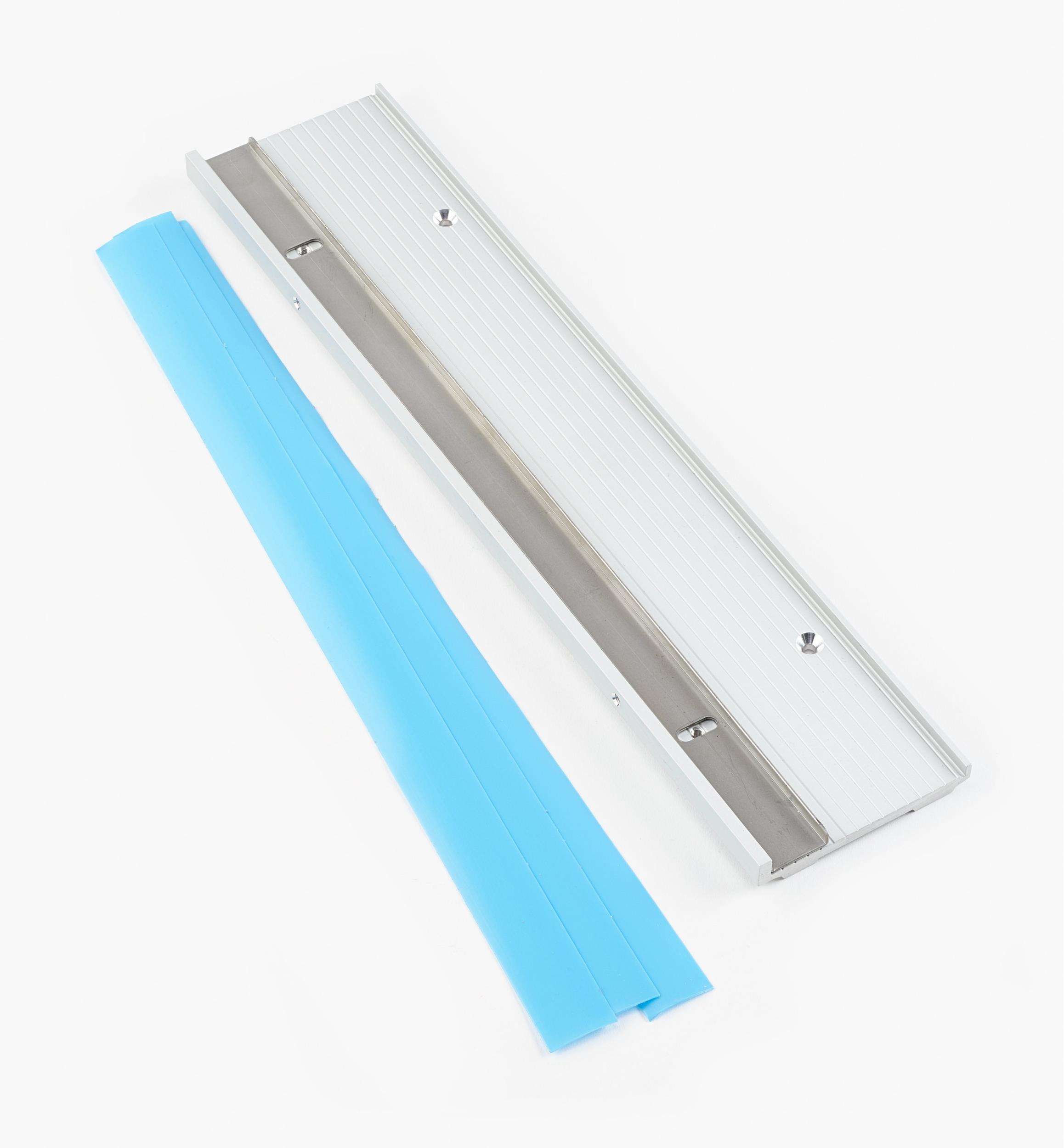 Needs Pictures: 0
Needs Pictures: 0
 Picture(s) thanks: 0
Picture(s) thanks: 0
Results 16 to 30 of 37
-
30th September 2021, 07:45 AM #16
 GOLD MEMBER
GOLD MEMBER











- Join Date
- Jul 2011
- Location
- In between houses
- Posts
- 1,784

Definitely the course at the school, the tools can come later, the knowledge and experience will be priceless.
-
30th September 2021 07:45 AM # ADSGoogle Adsense Advertisement
- Join Date
- Always
- Location
- Advertising world
- Posts
- Many
-
1st October 2021, 12:31 PM #17
 Senior Member
Senior Member











- Join Date
- Jul 2010
- Location
- Brunswick VIC
- Age
- 42
- Posts
- 456
-
1st October 2021, 12:49 PM #18
 Senior Member
Senior Member











- Join Date
- Jul 2010
- Location
- Brunswick VIC
- Age
- 42
- Posts
- 456

Yep. I think I'm going to do the a semester of open classes.
Next furniture project I have in mind is a sideboard with integrated bookshelf. Storage for office. Form wise, something like this Hans Wegner.
I'd probably do it in blackwood, put it on a low stand with feet, include some filing cabinet hardware, and do something different for hardware.
I reckon it'd be fun one to work on with some expert help from design through to build. Probably learn an tonne.
Not sure how it works with actual shop time though. Like, I'd wanna work on this in my own shop, and it wouldn't be practical to lug it back and forth all the time...
Might have to choose a smaller piece.
-
1st October 2021, 12:51 PM #19
 Senior Member
Senior Member











- Join Date
- Jul 2010
- Location
- Brunswick VIC
- Age
- 42
- Posts
- 456
-
3rd October 2021, 02:35 PM #20
 Senior Member
Senior Member











- Join Date
- Jul 2010
- Location
- Brunswick VIC
- Age
- 42
- Posts
- 456

Folks with router planes, would ya go for the the large (based on Stanley 71) or medium?
I think I got confused. I know I want a medium shoulder plane, but medium router plane is a fairly different animal to the full size.
I could perhaps get away with either, since mostly I want it for tuning up joinery and installing hardware. However, the handles and reference area of the 72 pattern is no doubt useful.
If I want something specifically for small boxes, then the medium is probably the way to go. I may end up with two different sizes. In which case, go for the full size first, right?
-
3rd October 2021, 03:55 PM #21

That's a lot of potential uses for a router plane.
Using Lie Nielsen mainly because they have copied Stanley's designs, and Veritas because I like their innovative design approach.
Note that if you are going with a medium router plane, Veritas make one, Lie Nielsen and Stanley do not.
There are other differences between a Veritas and the Lie Nielsen which may or may not be important for you. For one, the Veritas cutters will work in a Stanley router plane. I haven't checked, but the Veritas cutters possibly also work in the Record version. Note that Lie Nielsen cutters will not work in Stanley, Record or Veritas router planes.
Lie Nielsen's open throat version
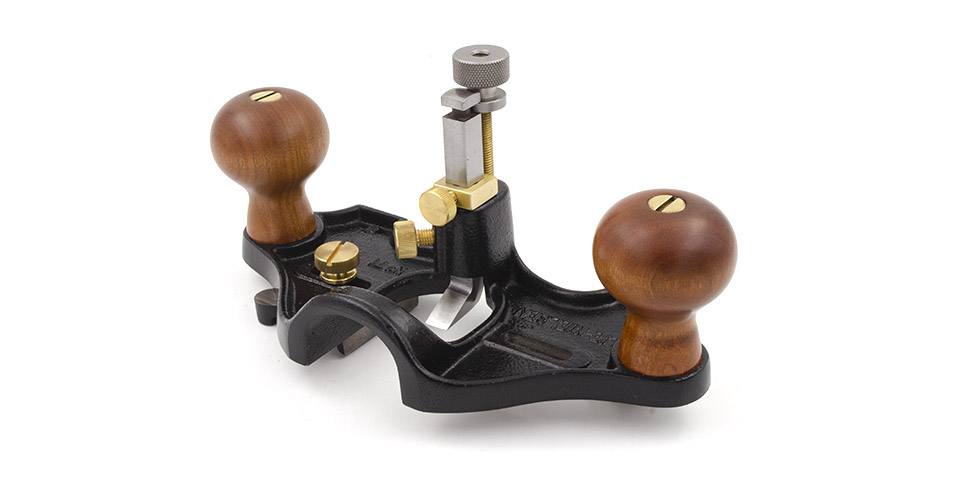
and their closed throat version
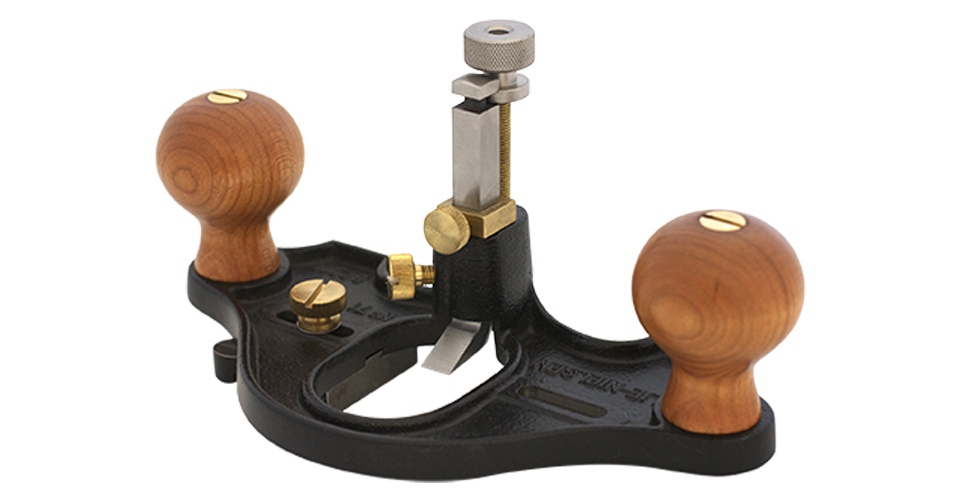
Veritas only make a closed throat version
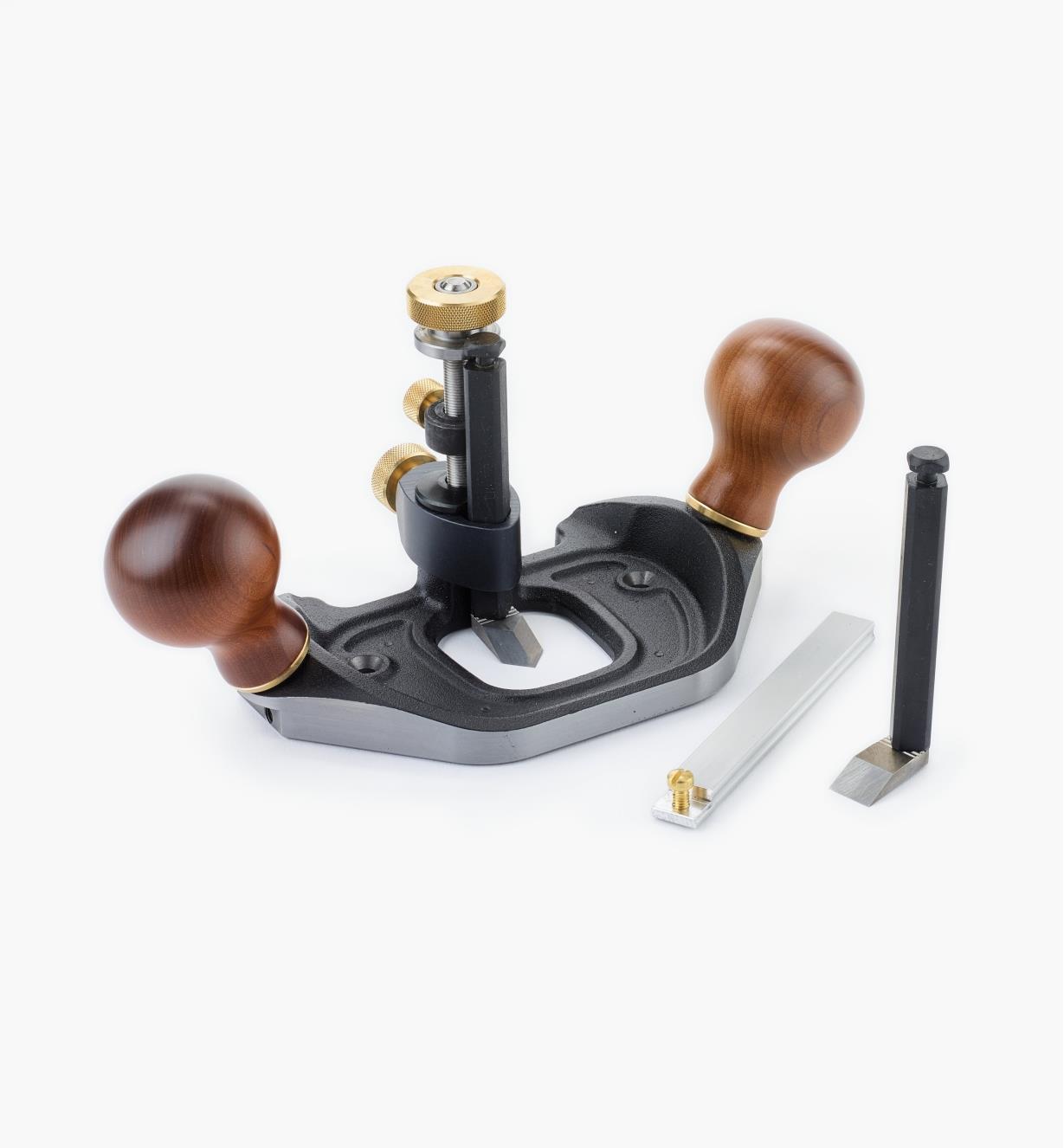 I won't attempt to say which router plane (Stanley, Record, Veritas, Lie Nielsen, et al) is better.
I won't attempt to say which router plane (Stanley, Record, Veritas, Lie Nielsen, et al) is better.
Copies of Preston's router planes are available through small scale US makers.
I use my router plane for trimming tenon cheeks (fine tuning joinery in your parlance) at which both the open and closed throat versions excel.
But, I've also considered getting a Preston copy as it (a) uses the same cutters as the Veritas, and (b) can trim a longer tenon cheek.
The "hole" around the cutter could be challenging when working on a small box, and may or may not be a problem installing hardware.
Small router planes
when it comes to small router planes, my preference is the Lie Nielsen, mostly because I struggle with locking the round shaft of the Veritas's cutter and the similar round shaft cutter on Stanley's small router (#271).
I prefer the square cutters used on the Lie Nielsen version

Installation of hardware
Along with router planes, you could use a Veritas Hinge mortice plane, but then a chisel would work just as well.
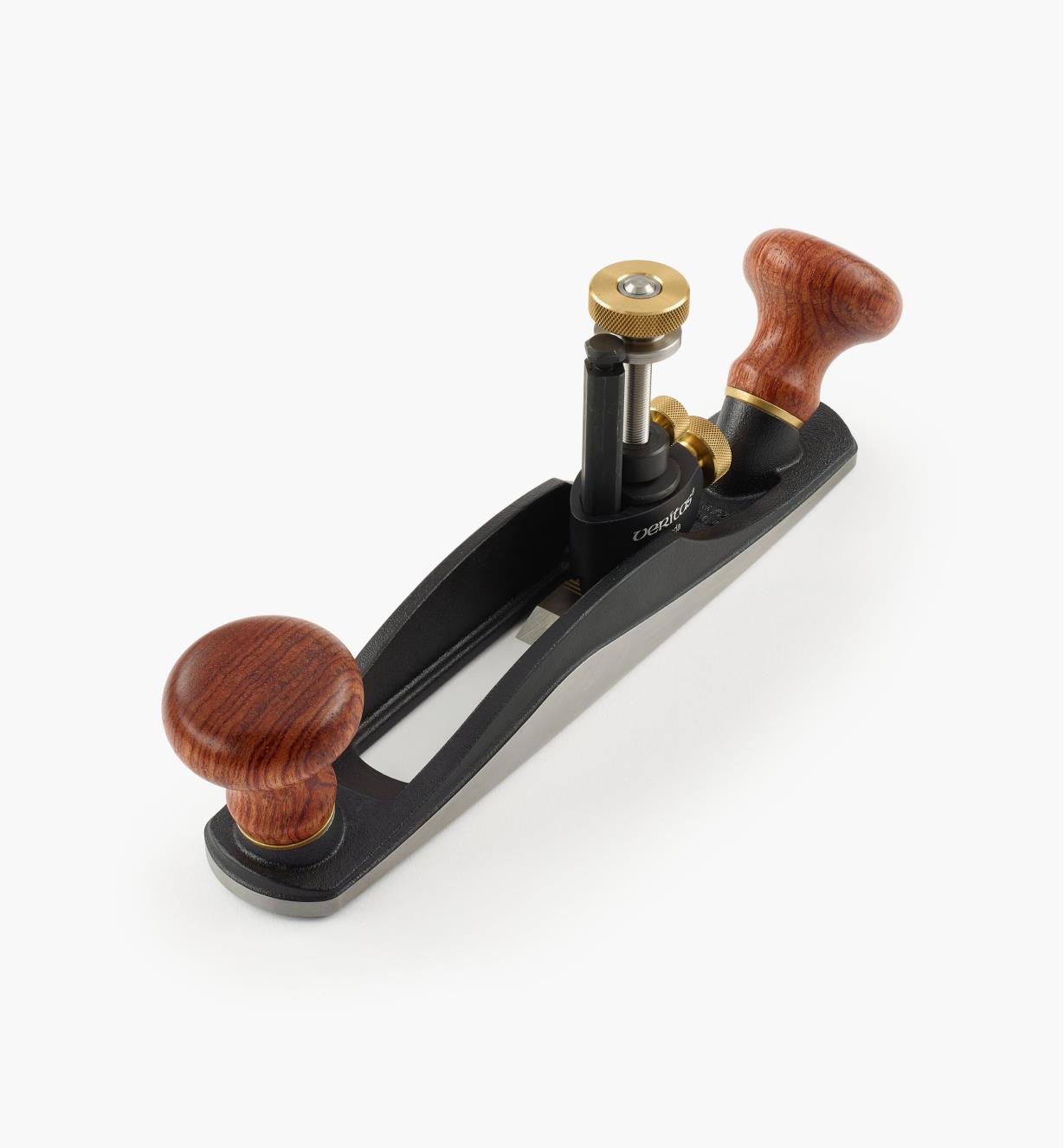
That's enough tool for nowregards from Alberta, Canada
ian
-
3rd October 2021, 04:17 PM #22
 Senior Member
Senior Member











- Join Date
- Jul 2010
- Location
- Brunswick VIC
- Age
- 42
- Posts
- 456

Thanks Ian. This forum never ceases to amaze me with the generosity of its members and the info they share.

The main thing I want it for is tenon cheeks, and I've looked at the LN v LV reviews (mostly Matt Estlea), so I reckon I'll grab the Veritas version of the Stanley 71 design.
When I get into smaller stuff, I'll get a smaller router plane, and by then, I'll have a better sense of having used the the bigger one for a while.
I think the Veritas medium is only very slightly larger than the small version, but it takes the same blades as the large. That seems like a pragmatic option. Having said that, it's probably unlikely that I'd want big 1/2" blades in small router. The other way around would be useful though - small blades in a big router plane.
-
3rd October 2021, 11:56 PM #23
 GOLD MEMBER
GOLD MEMBER











- Join Date
- Mar 2010
- Location
- US
- Posts
- 3,111

Not sure what's available there. I guess sellers has ruined the market for older router planes, but I've had the LV and a couple of vintage router planes, and now just have one stanley (the type with the front foot) 71. I would rather have it than the modern types - it just seems to have a better looser feel to me vs. the overly tight modern types (I can work faster with it).
-
4th October 2021, 12:06 AM #24
 GOLD MEMBER
GOLD MEMBER











- Join Date
- Mar 2010
- Location
- US
- Posts
- 3,111

I might sound like a misdirected chisel crusader, but the blue spruce chisels leave me cold. For the price, I'm not sure what you get other than a really high polish finish - otherwise, they're just flat stock stuck in a handle.
You can get a good set of vintage chisels from england that are much better chisels and far more well made for about half the price (but you have to be able to spot the old ones vs. the new).
I don't get it on the paring chisels, either - in order for paring chisels to be sprung right, they need to be thicker at the tang and taper thinner at the edge (and even better if the taper isn't even - as in , most of the thickness tapers out in the first half of the length from the tang and then the remainder of the business end is suitably thin.
The blue spruce chisels look like something made from a kit - which is what I think they are essentially - a collection of parts that can just be assembled and I've never seen vintage paring chisels with a 6.x" blade length.
They do fit the criteria for bloggers and youtube reviewers, though - they can be sold new, which means that reviewers can either sell ad space on their blogs or get link through revenue or both. Not a fan of that stuff.
It costs about half as much to look around for a little while and get a mixed set of patternmaker's octagonal bolster chisels from England (vintage - not aware of anything that compares new. They are kind of a pain to make like the old ones and it takes hand skill and not jigging or unskilled finishing.)
-
4th October 2021, 12:56 AM #25

David, not meaning to be contrary, but I like the Blue Spruce dovetail chisels. They are light and well balanced. The minimal lands gets into tight corners. I would prefer the steel to be something other than A2 but, having said this, other than that they do not hold an edge as long as PM-V11, they hold a sharp edge for a decent time, and can be used with a light mallet.
I will hang onto mine, especially as they are also quite beautiful and are in all the sizes I find helpful (1/8" through 3/4").

You have done a wonderful job with your chisels, and I am sure that the fact you made them is a buzz. It would be for me. But let's not take away from the original BS chisels (I cannot say whether the new versions are as good).
Regards from Perth
DerekVisit www.inthewoodshop.com for tutorials on constructing handtools, handtool reviews, and my trials and tribulations with furniture builds.
-
4th October 2021, 01:10 AM #26
 GOLD MEMBER
GOLD MEMBER











- Join Date
- Mar 2010
- Location
- US
- Posts
- 3,111

I'm not comparing mine to them. It's not a reasonable goal to forge shape chisels and hand grind them just to have a few (let alone work through the nits of heat treating to get them to match or better most commercial heat treating).
But rather, comparing them to English chisels that are made with taper and spring that's better.
That said, the BS chisels offer the ability to get something that looks like the picture without much effort, and that is very valuable when someone doesn't want to become an expert in something. I just find them offputting because they're not really a chisel as a unit , they're just an assembly of simple parts, and some of the choices for the parts (A2) are better for the assembler than they are for the user in the context of what makes a good chisel.
And they are ungodly expensive given that.
If I were retired, I would literally make forged and hand finished paring chisels out of a steel equivalent to japanese white steel for that price.
(there used to be sort of a relationship that some folks had with Dave Jeske, too, as he did a good job being polite to customers and building relationships, but that's gone now - woodpeckers owns the brand and they moved the toolmaking to their location. In the US, moving something from the PNW to Ohio is about the same as moving to another country. )
I get why woodpeckers thought it was an attractive business -you just source the parts, assemble and inspect - the accomplishment of Dave was to engineer a process but ...well, again, anyone who wants to buy A2 flat stock could literally buy 1/8" flatstock, shape it annealed and send it to an reputable heat treatment place (that's a charge of about $80 here) and make a full set of similar chisels.
I recall George telling me at one point that when they had large HSS blades at CW, some of the craftsmen would just regrind them into chisels, and if one has an HSS blade thick enough to do that, it's not the worst idea in the world.
These are just my opinions - the making isn't on the level of what LN and LV do in terms of doing something that a person can't easily do on their own.
-
4th October 2021, 01:39 AM #27

David, this is apples and oranges. You are referring to paring chisels with long, tapered blades. The Blue Spruce I refer to are essentially butt chisels. The blades may be parallel, but this ensures that they are slim, and this is an advantage when dovetailing. In these situations I prefer to use a light mallet as this affords greater control of the blade. Your chisels and the ones you refer to would not be used this way.
One area of design that Dave Jeske should be congratulated on is the way he created the lands on the dovetail chisels. They are hollow ground. I copied this when modifying a set of Stanley 750s. I very much doubt that many other hobbiests would do so. It was not easy.
Incidentally, I recall David Savage praising the design of these chisels, but was less happy about the A2 steel. David was always strongly a traditionalist when it came to tools.
Regards from Perth
DerekVisit www.inthewoodshop.com for tutorials on constructing handtools, handtool reviews, and my trials and tribulations with furniture builds.
-
4th October 2021, 02:05 AM #28
 GOLD MEMBER
GOLD MEMBER











- Join Date
- Mar 2010
- Location
- US
- Posts
- 3,111

Derek, I don't know how your chisels entered this conversation. The comment at the beginning of this is for dovetail chisels that cost about $100 each $US. I didn't look at your review of chisels and am not referencing it here. I don't know if someone mentioned butt chisels here, either - I didn't see it but maybe I missed a post. The comment had zero to do with your blog or reviews, and 100% to do with my experience in using chisels (and not in making, aside from noting that making the type that BS makes for functional purposes is a matter of cutting something out of flat stock, and can be done reasonably neatly and cheaply).
My comments stand, and the comparison is buying a set of reasonable older English chisels vs. buying a whole bunch of sets of I don't know what when the latter is just made to a higher polish.
Sometimes, people buy stuff like that for gifts, though, and that's fine. I have kind of this idea that like LN does with bench planes, the buyer should get a little something in return that they couldn't duplicate easily or find elsewhere. the BS chisels don't meet that standard - they look like chisels tossed together by a process engineer but polished to draw in folks who are more swayed by the scratch pattern than the proportions. And the link to the founder is gone, and even though I'm not much for buying tools from someone who is a "Friend" (which is often overemphasized in the boutique world), that does count for something when the buyer is woodpeckers and the manufacturing/assembly/fulfillment is moved away.
-
4th October 2021, 02:09 AM #29

David, I was responding to your comments. I thought that they were unfair - especially as this thread is about special tools purchased as gifts.
"I might sound like a misdirected chisel crusader, but the blue spruce chisels leave me cold. For the price, I'm not sure what you get other than a really high polish finish - otherwise, they're just flat stock stuck in a handle ...
....The blue spruce chisels look like something made from a kit - which is what I think they are essentially - a collection of parts that can just be assembled and I've never seen vintage paring chisels with a 6.x" blade length."
Regards from Perth
DerekVisit www.inthewoodshop.com for tutorials on constructing handtools, handtool reviews, and my trials and tribulations with furniture builds.
-
4th October 2021, 02:37 AM #30
 GOLD MEMBER
GOLD MEMBER











- Join Date
- Mar 2010
- Location
- US
- Posts
- 3,111

I think they're fair - they're accurate. There is a handle made form some kind of duplicating machine, presumably someone finishes it (but I'd be shocked if anything but the pattern is hand turned), The ferrule is a device made to hide the handle and blade junction because it's probably a bit garish when it's just flat stock stuck in wood, and the blades are made by someone else that BS sources (dave said this himself) out of a steel that's not that great for chisels and doesn't even tolerate some natural stones. But it's very stable (and available in droves) so getting it manufactured and heat treated is fairly easy.
There are always going to be folks who really just like the finish of something, and to those folks, they could very easily say "I like the polish and how well it's finished and that's more important than proportion", and that's fine.
Similar Threads
-
Birthday/Christmas Gift
By xpro in forum AUTOMATAReplies: 8Last Post: 8th January 2020, 08:02 PM -
A Birthday Gift
By pawoods in forum SCROLLERS FORUMReplies: 4Last Post: 23rd March 2015, 07:35 AM -
Birthday gift idea for my DAD
By Arry in forum WOODWORK - GENERALReplies: 3Last Post: 7th April 2013, 12:43 AM -
Gift for a 50th Birthday
By Dorno in forum WOODTURNING - PEN TURNINGReplies: 9Last Post: 20th March 2013, 11:32 PM -
The Birthday Gift
By Rodgera in forum WOODIES JOKESReplies: 4Last Post: 6th November 2008, 12:31 PM



 Thanks:
Thanks:  Likes:
Likes: 
 Reply With Quote
Reply With Quote

